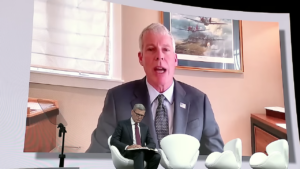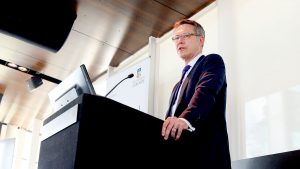A new report has called for an increased rollout of renewable energy in Australia’s rural communities, not just for the purposes of generating cheaper and cleaner power, but as a major new driver of economic growth and jobs.
The Climate Council report, published on Tuesday, warns that Australia’s rural communities are on the front line in the battle against climate change, as one of the most exposed to worsening extreme weather events including as bushfires and drought.
But the report’s co-author, Will Steffen, says community-owned renewable energy was one way for farmers to adapt.

“You have to have some leaders in your community that can actually get on top of the issue and say, ‘look, forget about federal politics or whatever side you’re on, this is good for our community’,” he said.
The report – On the Frontline: Climate Change & Rural Communities – says that regional Australia, due partly to its suitability to the development of large-scale renewables – is already home to more than one-third of the nation’s total investment in renewables, valued at between $1 billion and $2 billion a year, with many communities targeting 100 per cent renewable energy goals.
But the report also notes that Australian farmers are increasingly embracing renewables, not just as a way to help combat climate change, but to add additional revenue streams to their properties.
According to the report, farmers and rural landowners who host wind turbines on their land get annual lease payments of around $10,000 per turbine per year. Current estimates are that farmers are already earning a collective $20.6 million a year in this way.
On top of that, the report says that large-scale renewable energy projects pay annual rates to rural shire councils and often establish community benefit funds.
As an example, it cites the Snowtown Wind Farm in South Australia, which contributes around $50,000 a year in council rates and $50,000 a year to a community fund. The Waubra Wind Farm in Victoria, meanwhile, contributes $166,000 per year in rates and $64,000 per year to a community fund;
And renewables bring jobs, too: the report points to recent projections that targeting 50 per cent renewables in Australia by 2030 would create more than 28,000 jobs.
The report said the transition to clean energy would also help reduce costs in rural areas, both by cutting electricity costs and by removing the health burden of burning coal, which is almost entirely borne by rural and regional areas.
“Community funds and additional rate revenue for rural and regional areas from renewable energy can be used to improve public services such as schools and local infrastructure,” the report said.
Renewable energy can reduce electricity costs for rural and remote communities, who traditionally pay much higher prices than their urban counterparts. It also offers independence from the grid with several towns now racing to be the first to operate on 100% renewable energy.
“The positive news is that tackling climate change provides an unrivalled opportunity to attract jobs and investment back to these communities,” the Climate Council’s Professor Lesley Hughes said.
“The new projects in renewable power provides enormous opportunities for new income streams and real prospects for energy self-sufficiency, particularly for those in the bush,” said Tim Flannery, the Climate Council’s chief councillor.









